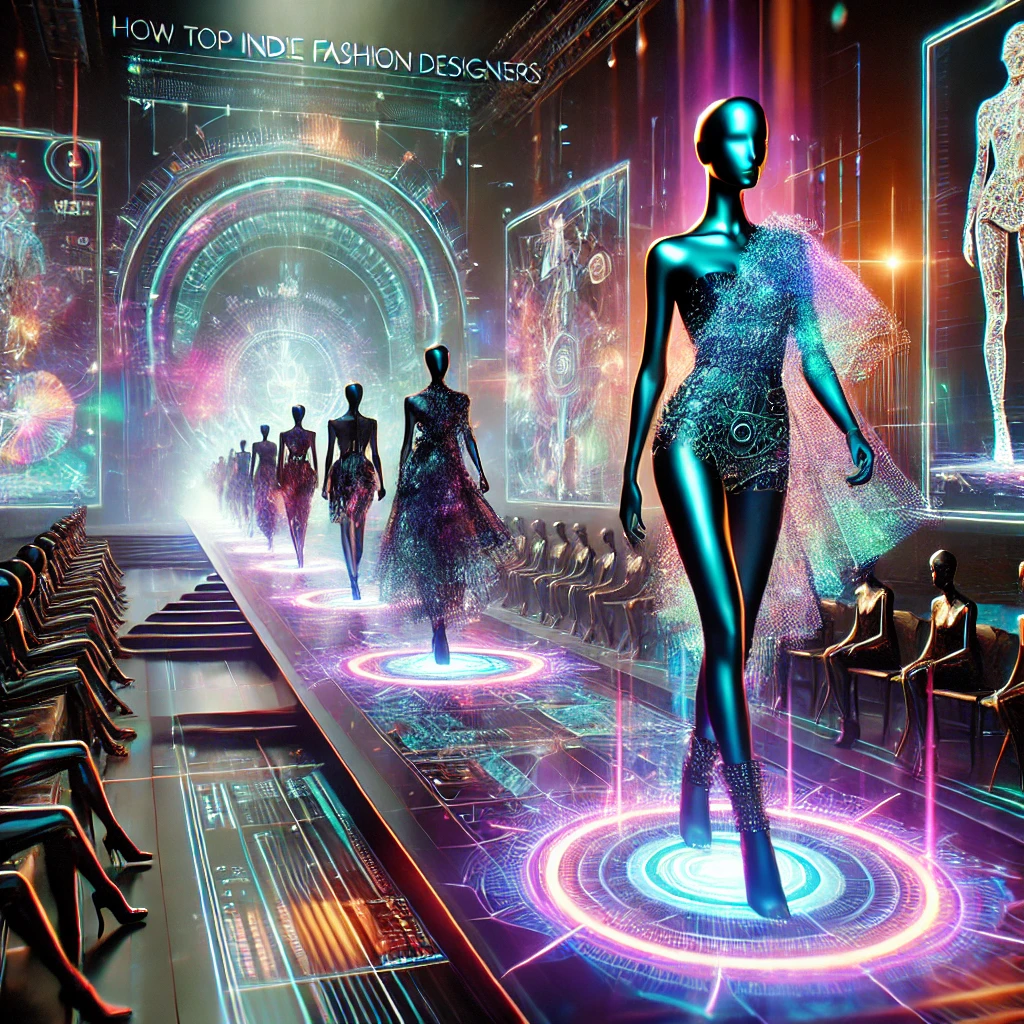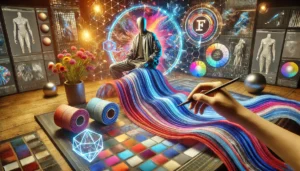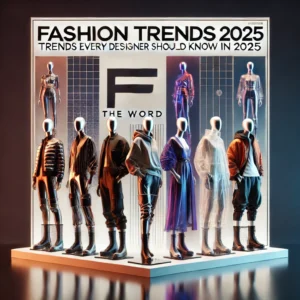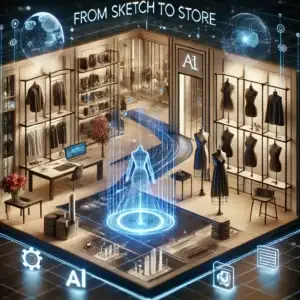The fashion industry is undergoing a digital revolution, and indie fashion designers are at the forefront of this transformation. By leveraging cutting-edge tools and technologies, designers like Hanifa are redefining what it means to create, showcase, and sell fashion in the modern era. For boutique fashion designers and independent creators, this shift offers exciting opportunities to innovate, reduce costs, and connect with audiences in new ways. Let’s explore how indie fashion is embracing digital innovation to create personalized fashion experiences, promote sustainability in fashion, and revolutionize the fashion business.
The Rise of Indie Fashion in the Digital Age
Indie fashion has always been about creativity, individuality, and breaking away from the mass-produced norms of traditional fashion. Today, digital tools are empowering indie fashion designers to compete with larger brands by streamlining production, reducing waste, and offering unique online selling clothes experiences. From 3D design software to virtual fashion shows, technology is leveling the playing field and enabling boutique fashion designers to bring their visions to life like never before.
One of the most exciting trends in indie fashion design is the move toward faster fashion—quick turnarounds that respond to trends without compromising on ethics. Digital tools allow designers to create and iterate rapidly, while platforms like Instagram and TikTok make it easier than ever to showcase and sell their work directly to consumers.
How Hanifa is Leading the Digital Fashion Revolution
Hanifa, the brainchild of designer Anifa Mvuemba, has become a trailblazer in the indie fashion world by embracing digital innovation. During the pandemic, Hanifa made headlines with its groundbreaking virtual fashion show, where 3D-rendered garments floated down a digital runway on invisible models. This bold move not only showcased the brand’s creativity but also highlighted the potential of digital tools to redefine how fashion is presented and consumed.
Hanifa’s success goes beyond virtual shows. The brand has also embraced sustainability in fashion by using digital tools to minimize waste. By creating detailed 3D prototypes, Hanifa can perfect designs before producing physical samples, reducing the environmental impact of trial and error. Additionally, the brand’s direct-to-consumer model allows it to sell clothes online while maintaining a personal connection with its audience.
Other Indie Fashion Designers Embracing Digital Innovation
Hanifa isn’t the only indie fashion designer pushing the boundaries of digital fashion. Across the industry, creatives are using technology to innovate and inspire:
- Iris van Herpen: Known for her avant-garde designs, van Herpen combines traditional craftsmanship with cutting-edge technology like 3D printing to create otherworldly pieces that blur the line between fashion and art. Her work is a testament to how indie fashion design can merge artistry with innovation.
- Phoebe Philo: A champion of sustainable fashion, Philo’s minimalist designs align with the indie ethos of quality over quantity. Her work reminds us that digital tools can enhance sustainability in fashion by reducing waste and optimizing production.
- Olivier Rousteing (Balmain): While Balmain is a luxury brand, Rousteing’s collaborations with digital artists and his savvy use of social media offer valuable lessons for boutique fashion designers looking to build their brands online.
- Danit Peleg: A pioneer in 3D-printed fashion, Peleg’s work demonstrates how indie fashion designers can use technology to create customizable, on-demand clothing that resonates with modern consumers.
- Neri Oxman: A designer and MIT professor, Oxman’s work at the intersection of fashion, biology, and technology inspires indie fashion designers to think outside the box and explore new materials and processes.
How Indie Designers Can Embrace Digital Fashion
For boutique fashion designers and independent creators, the digital revolution offers endless possibilities. Here’s how to get started:
Adopt 3D Design Tools
Tools like CLO 3D, Blender, and Marvelous Designer allow indie fashion designers to create realistic prototypes without the need for physical samples. These tools not only save time and money but also open up new creative possibilities.
Leverage Social Media and E-Commerce
Platforms like Instagram, TikTok, and Pinterest are essential for building a brand and selling clothes online. By sharing behind-the-scenes content, engaging with followers, and showcasing your designs in action, you can create a loyal community of customers.
Focus on Sustainability
Digital tools can help indie fashion designers reduce waste, experiment with upcycling, and create made-to-order collections. By prioritizing sustainability in fashion, you can appeal to eco-conscious consumers and differentiate your brand in a crowded market.
Collaborate and Innovate
Partnering with tech companies or other designers can help you push creative boundaries and explore new opportunities. Whether it’s a collaboration with a digital artist or a venture into virtual fashion, innovation is key to staying ahead.
The Future of Indie Fashion and Digital Innovation
As technology continues to evolve, the possibilities for indie fashion are endless. Here are a few trends to watch:
Personalized Fashion Experiences
Consumers are increasingly seeking unique, customizable designs, and indie fashion designers are perfectly positioned to deliver. By using digital tools to offer made-to-order or customizable pieces, you can create a truly personalized fashion experience.
Faster Fashion Without Compromising Ethics
Digital tools allow indie fashion designers to respond quickly to trends while maintaining sustainable practices. By embracing on-demand production and reducing waste, you can stay agile without sacrificing your values.
Virtual Fashion and the Metaverse
The rise of virtual fashion and the metaverse offers exciting opportunities for boutique fashion designers. From designing digital-only garments for gaming to creating virtual showrooms, the possibilities are endless.
Conclusion
Indie fashion designers like Hanifa, Iris van Herpen, and Phoebe Philo are proving that creativity and technology can coexist. By embracing digital tools, they’re redefining what it means to create, showcase, and sell fashion in the modern era. For boutique fashion designers and independent creators, now is the time to innovate and explore the possibilities of digital fashion. Whether you’re experimenting with 3D design, building your brand on social media, or exploring virtual fashion, the future of indie fashion is bright—and digital.




